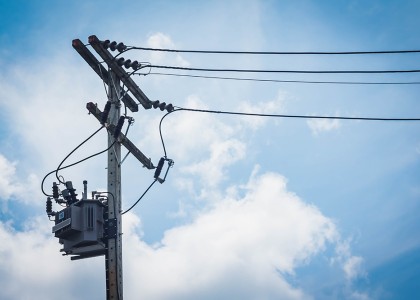Electrification – shifting from fossil fuels to electricity – is a key strategy for decarbonizing the US economy. While it may not be workable in all applications, given current and likely technologies as well as economics, electrification can reduce energy use, cut greenhouse gas emissions, and save consumers money in many applications. In this post, we discuss key opportunities for electrification by sector and underscore the importance of energy efficiency as a critical partner.
Transportation
As a previous ACEEE blog post noted, the largest opportunity for electrification is in the transportation sector. Approximately 15 battery all-electric passenger vehicle models are now on the market, with an increasing share able to drive more than 200 miles on a charge. A recent analysis from Deloitte estimates that the industry will reach a tipping point in or around 2022, when in its view, the cost of owning a battery electric passenger vehicle will be on par with internal combustion engine counterparts. In addition, multiple manufacturers are now developing electric pickup trucks for market introduction in the next few years.
Larger electric trucks are also entering the market, as profiled in a recent ACEEE white paper. Battery electric trucks are likely to gain popularity first for delivery vehicles (e.g., Amazon has ordered 100,000 electric delivery vans), then regional hauling, and ultimately long-distance hauls of up to 500 miles (e.g., Freightliner, Tesla, and Volvo are now road-testing 18-wheelers that can go 200 miles or more on a charge and are slated to enter the market by late 2021). However hauls longer than 500 miles will be difficult to undertake on a single charge – for these applications Nikola, Kenworth, and Hyundai are now developing fuel-cell trucks that run on hydrogen. According to the North American Council for Freight Efficiency, in the 2040s, the majority of heavy trucks on the road will run on batteries or fuel cells.
There are also electrification opportunities for airplanes, but only for short hauls. Several companies have built all-electric planes that can carry a few passengers. Work to develop larger planes for short routes is underway. For example, Wright Electric and Easy Jet are working to develop an 180-seat electric plane that can travel 300 miles, targeting 2027 for commercial service. Ultimately flights of about 600 miles may be possible. But the majority of air miles are in longer flights, which will likely require biofuels, hydrogen fuel cells, and hybrid fuel/electric models.
Industry
Industry is very diverse in its energy needs. While much of the sector’s energy consumption is fossil fuels, several industrial processes, such as secondary steel, aluminum, and industrial gasses primarily use electricity. Industrial electrification efforts have been in place for many decades, focused on niches where electro-technologies can provide productivity or quality improvements or create economic savings from retiring legacy systems, such as old steam boilers. Some examples include electric infrared heating, ultraviolet curing used for coatings, radio frequency drying, induction melting of ferrous metals, and membrane separation in chemical processes. Some low- to medium-temperature heating applications can use industrial heat pumps, which can go as high as 130 °C (266 °F). Many high-temperature processes in the metals, ceramic, chemical, and petroleum industries, need fuels for current processes.
Homes
Electric heat pumps can provide heat and hot water for many American homes. They make sense in new construction in particular, as they can save the builder money by not having to install gas service, and new homes can be built to be very efficient so that residents don’t need much heat, even in cold climates. The Rocky Mountain Institute has found that heat pumps generally make sense in new homes, including as far north as Chicago.
Likewise, research by ACEEE has found that for existing homes with natural gas heat in roughly the southern two-thirds of the United States, installing a heat pump when an existing central air conditioning system needs to be replaced can often save energy and money on a lifecycle basis. ACEEE has also found that in existing homes with oil or propane heat, the lifecycle economics of heat pumps are often positive in most of the country, except in the northern Midwest.
Depending on the system type and geography, outside of the upper Midwest, simple payback periods range from 1 to 16 years, with payback periods generally shorter for displacing oil than for displacing propane. In Minnesota, a field study installed heat pumps optimized for use in cold climates in eight homes and found they performed well at outdoor temperatures as low as 5-10 °F. But when temperatures got colder, the homes needed backup heat, typically from a propane or natural gas furnace. Over the course of the winter, the heat pump provided 60% of the heat and the furnace provided 40%, on average. Thus, partial – but not full – electrification is currently possible for existing homes in cold climates.
Commercial buildings
There has been very little analysis of electrification opportunities in the commercial sector. As with residential, going all-electric is much easier in new construction that in existing buildings. For example, Stanford University and the University of California Berkeley have established policies to generally go all-electric in new construction. And most zero-energy buildings use efficiency to dramatically reduce heating and cooling loads, often making heat pumps the preferred space conditioning system in them.
ACEEE is now beginning research on the costs and benefits of electrifying existing commercial buildings in the United States, examining different sectors (e.g., office, retail), building types (e.g., low- and high-rise), system types, and geographies. We hope to publish our results this summer. Though the research is just beginning, it is already clear that electrifying low-rise buildings is easier than electrifying high-rise buildings.
Zero-carbon fuels
If some applications will need fuels, which ones can we use? Renewable natural gas (RNG) (the term the gas industry uses for methane gas produced by landfills, manure digesters, sewage treatment plants, and other biological sources), green hydrogen (hydrogen produced with minimal greenhouse gas emission, such as via electrolysis using renewable energy), and biofuels will each likely play a role. For some industrial processes, use of fuels with carbon capture, utilization, and storage may also be an option. And for transportation, while currently expensive, synthetic electrofuels might be an option in the future.
However supplies of many of these fuels are likely to be limited; estimates of potential US RNG production range up to only 10% of current US natural gas consumption. Likewise one estimate is that even if all of the world’s current biofuel capacity was diverted to bio-jet production, it would provide less than 1.5% of the world’s jet fuel requirements. Use of energy efficiency to reduce consumption would stretch available supplies further. And all of these fuels tend to be more expensive than conventional fuels, sometimes dramatically so. For these fuels to be able to compete economically, we may need a carbon tax or some equivalent policy. Another important issue with biofuels is that they be produced sustainably so they don’t cause environmental problems.
Conclusion
There are many excellent applications for electrification, such as for many or most cars, trucks, new homes and buildings, many existing homes and buildings, and many industrial applications. But electrification does not have a clear path to viability for some applications, such as long-haul trucks and planes, high-temperature industrial applications, and heating existing homes in the northern US on the coldest days of the year. For these applications, we will likely need zero-carbon fuels. But supplies of these clean fuels will be limited and should perhaps be reserved for applications where there are no other viable options.




